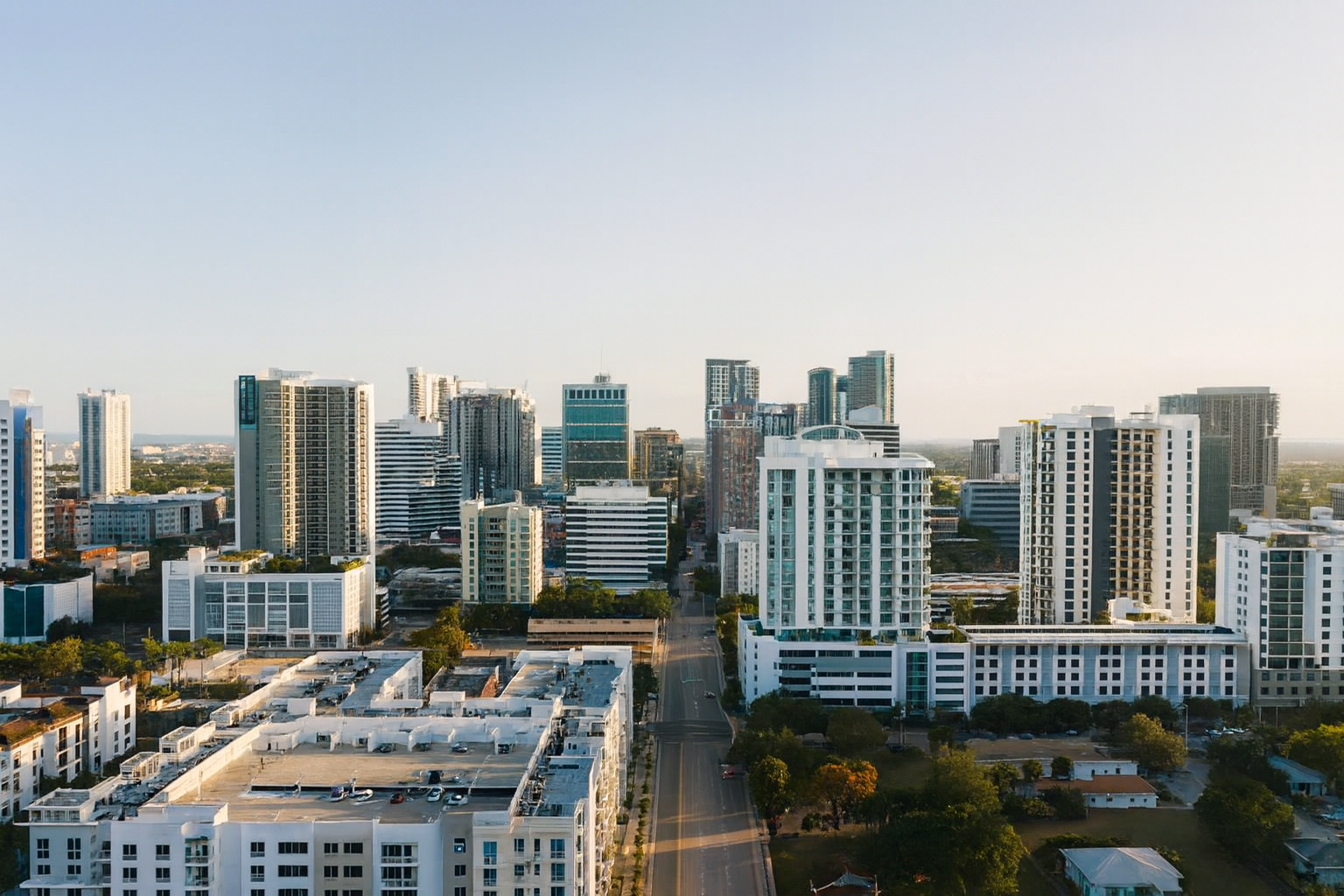Empty apartments don’t just mean quiet hallways – they mean money slipping out the door. Vacancy loss is one of the most closely watched metrics in multifamily, yet it’s often underestimated as one of the most powerful levers for profitability. Every day a unit sits empty is a day of lost rent, higher turnover cost, and slower NOI growth.
So, how much does vacancy loss really cost property managers? That depends on how quickly you can move residents from decision to signed lease, how smart your systems are, and how well your teams are aligned around retention.
Let’s break down what’s driving vacancy loss today and how leading operators are turning it into one of their biggest opportunities for revenue protection.
Vacancy Loss: The Silent NOI Killer
At its core, vacancy loss is the gap between your potential rent roll and what is actually collected. But experienced operators know it’s not just about missed rent. Vacancy compounds into turnover costs, marketing spend, concessions, and staff hours.
And while demand for rentals remains strong, Harvard’s Joint Center for Housing Studies warns that while demand for rental housing is still strong, market swings mean operators can’t assume that a vacant unit will fill itself. Even with rising rents helping top-line revenue, every vacant day chips away at NOI.
In a year where recession fears and inflationary pressures are already squeezing margins, vacancy loss has never been more costly.
How Faster Leasing Decisions Reduce Vacancy Loss
Speed is one of the most reliable predictors of portfolio performance. The longer a unit sits between decision and move-in (or renewal and vacate), the higher the risk of lost rent, concessions, and turnover costs. Every day shaved off that cycle directly protects NOI.
Across the industry, we consistently see a few factors that separate operators with low vacancy loss from those constantly playing catch-up:
- Earlier renewal decisions: Operators that start renewal conversations 60–90 days before lease-end consistently see higher retention and shorter vacancy periods. (With Renew, 64% of residents made their decision within 20 days of receiving an offer.) Earlier visibility allows teams to plan make-readies, pricing adjustments, and marketing efforts with fewer gaps in occupancy.
- Smarter applicant screening: tools that automate processes like fraud detection, payroll integrations, and ID verification compress the approval timeline while protecting NOI from risky residents.
- Centralized leasing operations: Shared teams armed with integrated technology respond faster, cover more ground, and ensure no lead or renewal slips through the cracks.
If operators have to prioritize one thing, faster leasing decisions move the needle most significantly. When residents decide sooner whether they’ll stay or vacate, data consistently shows a major lift in retention and far fewer last-minute surprises.
[We surveyed more than 60,000 households nationwide and found that residents who engaged with decision timing incentives were up to 50% more likely to renew. Download our study on what renters want to see the real cost of vacancy loss and how operators can reduce it.]
How Leading Property Managers Reduce Vacancy Loss
Top operators don’t just measure vacancy loss – they design systems to control it. The difference between average and exceptional performance often comes down to proactive habits and the right technology. Here’s what leading property managers are doing to stay ahead of vacancy loss:
- Resident retention first: Retaining residents is always cheaper than finding new ones. The best operators act early – tracking churn signals like declining app logins, low engagement with community events, low response to renewal outreach, or delayed rent payments – at least 90 days before lease-end. Renew’s resident retention platform helps operators spot at-risk residents earlier and re-engage them with personalized outreach before turnover happens.
- Proactive maintenance: No one wants a vacant unit sitting for weeks because of maintenance backlogs. Leading operators schedule preventive work – HVAC servicing, appliance upgrades, paint touch-ups – during occupancy, so make-readies take days, not weeks. That’s NOI protection, plain and simple.
- Pricing precision: Smart rent models don’t just chase short-term gains; they balance renewal likelihood with long-term profitability. Pricing a renewal even 2% below market can preserve occupancy, saving thousands in avoided vacancy loss. Over time, this precision compounds into a stronger NOI trajectory. That’s exactly why we created Pricing Impact Analysis - to help operators model the trade-off between rent growth and retention, and make smarter, data-backed pricing decisions that protect NOI.
- Tech adoption that sticks: Fromcentralized CRMs toAI-powered communications and IoT-driven maintenance alerts, the most innovative operators are using tech to close real gaps in leasing timelines. Teams that embrace multifamily technology and integrated platforms like Renew, report faster decisions, fewer handoffs and stronger retention outcomes.
Vacancy Loss Accounting in 2025
So, how much does vacancy loss cost property managers?
Industry averages put total turnover cost (including vacancy loss) at $4,000-$5,000 per unit. Vacancy loss alone can consume 5-10% of potential revenue, depending on market conditions. And with vacancy rates projected to rise into 2026, operators can no longer afford to treat vacancy as a cost of doing business.
Vacancy loss accounting is one of the few KPIs where marginal gains have an exponential impact. Shaving even a few days off leasing cycles or renewal decisions can translate into millions recovered across large portfolios, and that’s where the smartest operators find their edge.
How to Reduce Vacancy Loss in Your Portfolio
The good news is that vacancy loss is manageable. Operators who meet this cost head-on and shift from reactive to proactive leasing strategies will see measurable gains fast.
Whether you manage 200 units or 20,000, the playbook for reducing vacancy loss is remarkably consistent:
- Start renewals early: Engage residents 90+ days out, not just 30. Go beyond templated emails; personalize offers, open conversations, and set clear expectations for the process. The earlier you know their intent, the faster you can line up the next resident.
- Automate outreach: Manual emails and paper notices belong in the past. Automated systems that track engagement ensure your teams know exactly where to focus.
- Connect your workflows. Vacancy loss thrives in silos. Tools like Renew give every team — from leasing to maintenance to revenue — shared visibility into renewals and next steps, so no opportunity slips through the cracks. When everyone’s working from the same playbook, decisions happen faster and outcomes get stronger.
- Shorten make-ready cycles: Sync maintenance and leasing teams to turn units faster. Preventive maintenance pays dividends here — every day saved is a day of rent earned.
- Track proptech ROI: Don’t let new tools become proptech issues. Evaluate how each technology investment impacts occupancy, retention, and team efficiency.
When your systems align around early decisions and fast turns, the math on vacancy loss starts working for you, not against you
How to Calculate ROI on Vacancy Loss Reduction
For senior operators, the math isn’t new – but the ROI story is often what secures buy-in from investors and owners.
Here’s the higher-level view:
- Every day of vacancy saved adds directly to top-line revenue.
- Each unit retained avoids the sunk costs of marketing, concessions, and onboarding new residents.
- Portfolio-level gains compound, turning a few days saved per unit into millions across thousands of doors.
This is why leading operators are reframing retention as one of the most quantifiable levers in their financial playbook. The smartest portfolios don't see vacancy reduction as cost control; they see it as revenue growth
Minimize Vacancy Loss: A Long-Term Strategy
Vacancy loss isn’t just an accounting metric – it’s a window into your community’s health. High turnover disrupts culture, strains staff, and destabilizes NOI.
When operators pair smarter tech adoption with meaningful resident retention ideas, they build communities where residents stay longer, decisions happen faster, and revenue grows steadier. It’s not just about filling units – it’s about building loyalty. And it’s not just about measuring vacancy – it’s about designing systems that beat it.
The bottom line: to minimize vacancy loss, think beyond the unit and focus on the resident. The more valued and connected your residents feel, the fewer costly vacancies you’ll ever have to account for.
Find Your Secret Weapon for Reducing Vacancy Loss
So, how much does vacancy loss cost property managers? Enough to keep it front and center on every KPI dashboard, quarterly review, and investor conversation.
By starting renewals early, investing in integrated AI platforms, and aligning teams through seamless tech integrations, operators can cut vacancy days, boost NOI, and strengthen resident loyalty, turning vacancy loss from a perennial headache to a lever of predictable growth.
Every day a unit sits empty is money left on the table. The fastest path to growth isn’t always more leases – it’s fewer vacancies.
See how Renew can be your vacancy-reduction engine – cutting days, protecting NOI, and keeping residents in-network year after year. Schedule a demo today.
.svg)

.svg)





.png)









































